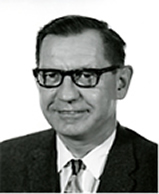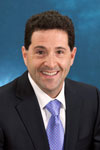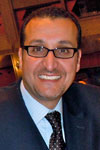History
Musculoskeletal Research at the University of Rochester has had a long and storied history. It all started in the days of the Manhattan Project when one URMC faculty, William F. Neuman PhD, initiated a research program in mineral metabolism focused on the biological impact of bone-seeking radioisotopes. Academic duties as co-founder and ultimately chair of the Department of Radiation Biology and Biophysics served as the backdrop to the expansion of his research to include the chemistry of inorganic and organic bone matrix, the behavior of bone cells and the metabolism of parathyroid hormone. Along with his wife Dr. Margaret Neuman, he published the seminal text “The Chemical Dynamics of Bone Mineral” in 1958 and went on to become a pioneer in the then nascent field of skeletal biology. The scope and impact of his scientific contribution is the basis for the oldest and most prestigious award presented by the American Society for Bone and Mineral Research: The William F. Neuman Award. It recognizes a society member for outstanding and major scientific contributions in the area of bone and mineral research and for contributions to associates and trainees in teaching, research, and administration.


William F. Neuman, Ph.D.
In 1979, following the trail set by Dr. Neuman, the Chair of Orthopaedic Surgery, Dr. C. McCollister Evarts, recruited a Neuman trainee, Dr. John Brand, to lead the newly formed Orthopaedic Research Laboratory. The subsequent Chair of Orthopaedics, Dr. Richard Burton, expanded this initiative by enabling the recruitment of Dr. J. Edward Puzas in 1981 and Dr. Randy N. Rosier in 1984. Dr. Puzas, a former trainee of Dr. Brand, worked to establish programs focused on understanding bone matrix and the osteoblastic cells that produce it. Dr. Randy Rosier was recruited as the Department’s first clinician scientist, and he initiated the cartilage biology program, focusing on growth factor regulation of the growth plate. With the strong commitment to perform collaborative research and the common strategic vision to expand the research activities of the Department, Drs. Burton, Puzas and Rosier set on the path to grow the small group of orthopaedic researchers at the University. Their efforts came to fruition on July 1, 2000, when Dr. Rosier was co-appointed Chair of the Department of Orthopaedics & Rehabilitation and Director of the new Center for Musculoskeletal Research (CMSR). Growth since the inauguration of the Center has been unprecedented; the CMSR is currently comprised of 31 Regular Faculty, 16 New/Early Stage Investigators (N/ESI), and more than 100 scientists occupying greater than 22,000 square feet of lab and office space in the S-wing of URMC.
Since 2000, several key programmatic achievements have galvanized the cohesiveness, productivity, and international reputation of the CMSR: a Center of Research Translation (CORT) grant examining the osteoimmunology of bone infection (Drs. Schwarz, Awad, and Miller), a Tissue-on-a-Chip Program (Drs. Awad, McGrath, and Miller), a ‘Training in Orthopaedic Research’ T32 training grant (Drs. Awad, Calvi, and Loiselle), and a Core Center Grant P30 (Drs. Schwarz and Calvi). Significant funds from these programmatic grants support the Center's research, and the success of individual faculty winning federal grants has placed our group among the top five NIH-funded orthopaedic research programs since 2000, with the number one ranking during five of those years. By pursuing our strategic mission, we aim to grow the success of our program and continue making strides in our basic understanding of musculoskeletal biology, translating what we learn into therapies for orthopaedic problems that critically impact the public health.

